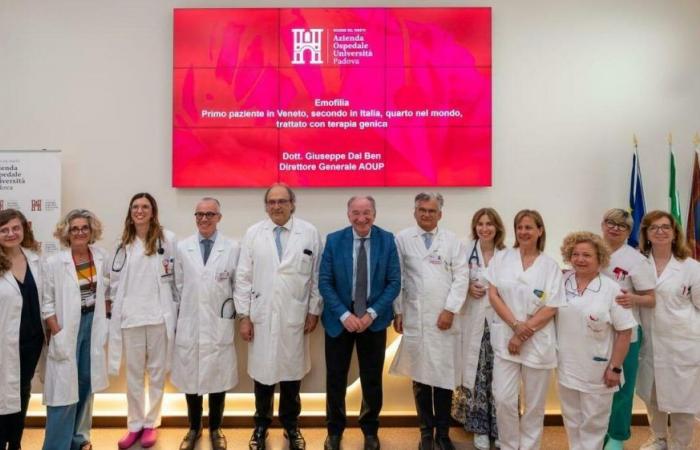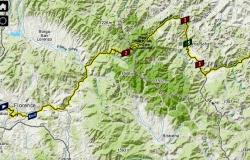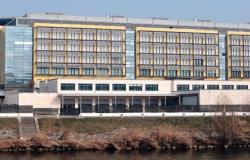PADUA – It is the first in Padua, the second in the Veneto and the fourth in the world to be successfully treated. Thanks to gene therapy, in fact, a 53-year-old patient affected by haemophilia he was treated and no longer risks the dangerous consequences of hemorrhages. It is therefore an important goal achieved by the Padua healthcare system, thanks to the excellence of the Medical Clinic I directed by Professor Paolo Simioni, where people suffering from rare diseases like this one, congenital and hereditary, caused by a deficiency of the proteins that promote blood clotting, are cared for. Yesterday, in addition to Simioni himself, Giuseppe Dal Ben, CEO of the University Hospital Company, entered into the merits of the record. For now, the therapeutic procedure cannot be applied to children whose liver is in the developing phase, while approximately half of the over 200 adults who belong to the Monoblock can use it.
Haemophilia, how much treatment costs
Severe hemophilia typically occurs early and is diagnosed within the first two years of life. It affects exclusively the male sex since the genetic message is associated with the fact that preventive care costs up to 200 thousand euros a year by subject. Gene therapy, on the other hand, has enormous advantages, considering that a single intravenous infusion is enough to inject it and ensure that the high levels of the clotting factor are sufficient to prevent bleeding. And in this way the patient is free from the disease for a long period. The patients currently being treated in the company for haemophilia A and B are 202 (95% of the total in Veneto), to which are added the 285 being treated for von Willebrand’s disease and another 148 being treated for various rare coagulation disorders; 57,921, however, were specific laboratory tests carried out, demonstrating the significant impact that the pathology has. The individual therapeutic plans prescribed are currently 833. The Uoc Clinica Medica 1, among other things, is home to the multidisciplinary regional center for the prevention, prophylaxis and advanced treatment of haemophilic arthropathy and that for the prevention, diagnosis and the therapy of haemophilias, thrombophilias and complex haemostasis pathologies. Furthermore, the Complex Operational Unit is accredited as European haemophilia comprehensive care centres.
Therapy
«We started from the idea of being able to treat a patient – observed Simioni – by resolving a pathology that requires the continuous administration of drugs to compensate for the lack of factor eight which promotes coagulation, while its absence results in bleeding. The advantage of the new therapy is that it is able to correct the genetic defect that is at the basis of the disease and allow the cell that synthesizes the factor to start producing it again, avoiding the patient the inconvenience of continuous treatment.”
«This is a revolution – said the director of the Uoc Medical Clinic 1 – destined to have a further evolution as in the future it will be possible to eradicate these rare and demanding diseases, perhaps reducing the use of orthopedic surgery as the haemorrhages inside the joints can cause irreversible damage.” And to explain how the mechanism works, he added: «You take the empty structure of a virus and “fill” it with genetic information to produce the missing protein. This engineering delivers the gene into the liver, which is capable of producing clotting proteins. The first patient who used the registered and marketed drug was eager to undergo definitive therapy after years of difficulty and such treatments have the potential to be decisive and ensure an optimal quality of life.”
© ALL RIGHTS RESERVED
Read the full article at
The Gazzettino






